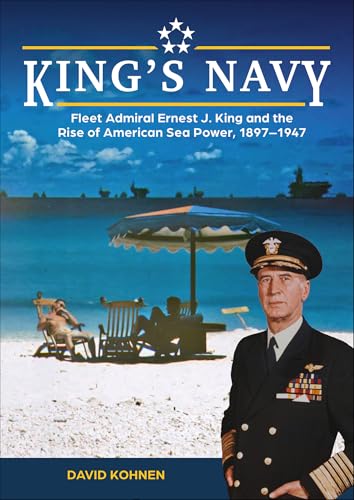
Admiral John S. McCain and the Triumph of Naval Air Power
by William F Trimble
Popularity
4.43 / 5
* A book's popularity is determined by how it compares to all other books on this website.
Where to buy?
Buy from Amazon* If you buy this book through the link above, we may receive a small commission at no extra cost to you.
Admiral John S. McCain and the Triumph of Naval Air Power by William F Trimble
Details
War:
World War II
Perspective:
Commanders
Military Unit:
US Navy
True Story:
Yes
Biography:
Yes
Region:
Pacific
Page Count:
419
Published Date:
2019
ISBN13:
9781682473719
Description
Brief Summary
Admiral John S. McCain and the Triumph of Naval Air Power by William F Trimble covers the life and career of Adm. John S. McCain Sr. (1884–1945). The book details McCain's pivotal role in the integration of aviation into the Navy and the evolution of the aircraft carrier from a tactical fleet element to a strategic force capable of long-range power projection. It emphasizes McCain's contributions to both carrier and flying boat aviation, highlighting his innovative approaches and leadership during his prewar and wartime commands.
Main Themes and Topics
The main themes of the book include the development and integration of naval aviation into the U.S. Navy, as well as the significant strategic shift in the use of aircraft carriers during World War II. The evolution of naval air power from a supplemental force to a principal strategy in naval warfare is central to the narrative. The book also examines McCain's crucial role in the emergence of flying boats for long-range reconnaissance in the Pacific, along with his influence in the Bureau of Aeronautics and as the Deputy Chief of Naval Operations (Air).
Writing Style and Tone
William F Trimble's writing is detailed and meticulously researched, providing a comprehensive look at Adm. McCain's career and the broader context of naval aviation's development. The tone is authoritative, reflecting the author's deep knowledge of the subject matter. Trimble effectively conveys the historical significance of naval aviation during McCain's era, making complex military evolutions accessible to readers with or without a background in military history.
Criticism
While the book is rich in detail, some readers might find the extensive focus on military strategy and aviation technology overwhelming. Those without a keen interest in military history or naval aviation may find certain sections dense and challenging. The book primarily appeals to readers who appreciate exhaustive historical documentation and those with a specific interest in naval military developments.









